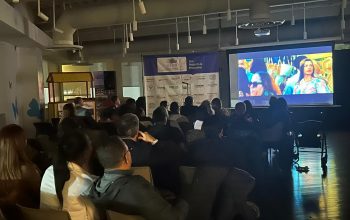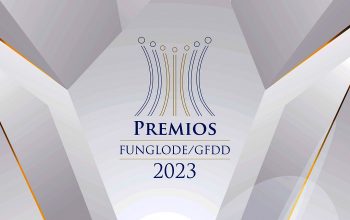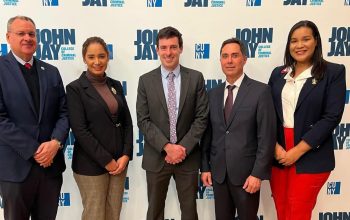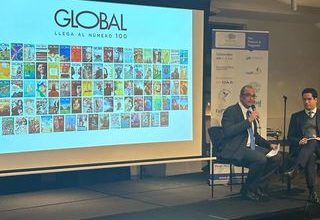news
Antonio Cocco Quezada Stresses Importance of Creating ClimateResources Subsecretary
August 23, 2007
The president of CODIA’s Disasters chapter was the first one to intervene in the debate session last Thursday at the “Second conference on Climate Change: Evidence of global warming in the Dominican Republic”
Last Thursday Antonio Cocco Quezada, president of the Disasters chapter at the “Colegio
Dominicano de Ingenieros y Agrimensores” (CODIA), took up again his proposal to create the Climatic Resources Sub-secretary and strengthen the meteorological services raising the National Office level to Institute level. “This will allow the State to give the due attention to country’s arrangements to adapt to the expected climate change. In addition, to take advantage of the climatic resources it counts on”.
Dominicano de Ingenieros y Agrimensores” (CODIA), took up again his proposal to create the Climatic Resources Sub-secretary and strengthen the meteorological services raising the National Office level to Institute level. “This will allow the State to give the due attention to country’s arrangements to adapt to the expected climate change. In addition, to take advantage of the climatic resources it counts on”.
Cocco spoke in those terms in the first presentation of the debate at the “Second conference on Climate Change: Evidence of global warming in the Dominican Republic”, which takes place at FUNGLODE.
In his conference titled “The Dominican Republic’s Climatology: relevance for a sustainable future”, Cocco stated that in order to be able to
carry out all the activities that lead to a change in attitude and mitigation efforts, “we have to reorganize ourselves, rescue climatologic information and apply quality controls, improve the observation stations, make information available to the public, stimulate research, integrate universities in climate research, explore the climatologic resources and project our development based on climate”.
carry out all the activities that lead to a change in attitude and mitigation efforts, “we have to reorganize ourselves, rescue climatologic information and apply quality controls, improve the observation stations, make information available to the public, stimulate research, integrate universities in climate research, explore the climatologic resources and project our development based on climate”.
According to
him, the sub-secretary he proposes “will allow us to a meet the Dominican Republic’s immediate challenges: monitoring global warming, preparing the country for the impact of global climate change, conserve and manage adequately water resources, assure greater efficiency in the attention to natural disasters, food production based on climate, take advantage of energy climatologic resources and poverty reduction”.
him, the sub-secretary he proposes “will allow us to a meet the Dominican Republic’s immediate challenges: monitoring global warming, preparing the country for the impact of global climate change, conserve and manage adequately water resources, assure greater efficiency in the attention to natural disasters, food production based on climate, take advantage of energy climatologic resources and poverty reduction”.
Antonio Cocco presented a historic overview, from the times of the tainos until our days in reference to climate observation and the establishment of forecasts and behaviors. “After several experiences such as those of the tainos, Charlevoix, the world climate regulating centers, the frequency of hydro meteorological disasters, the results of climate change and the need for sustainable development, we need a climate model that answers
to all these experiences that have been accumulated throughout the centuries. In addition, said model also has to respond to the variations that occurred in a given period of time and in the same region or in different regions due to the factors that influenced climate at the time.”
to all these experiences that have been accumulated throughout the centuries. In addition, said model also has to respond to the variations that occurred in a given period of time and in the same region or in different regions due to the factors that influenced climate at the time.”
The Dominican Republic’s Climate
As the
result of his studies on climate classifications, the engineer concluded that none of the existing classifications “related the climatic behavior to the dynamic elements that model our climate such as the atmosphere’s general circulation systems, the semi permanent anticyclones, the migratory cyclones, the secondary circulations and the local influence along with all the other factors that we outlined at the beginning of this conference.”
result of his studies on climate classifications, the engineer concluded that none of the existing classifications “related the climatic behavior to the dynamic elements that model our climate such as the atmosphere’s general circulation systems, the semi permanent anticyclones, the migratory cyclones, the secondary circulations and the local influence along with all the other factors that we outlined at the beginning of this conference.”
Thus, Cocco considered that the Spanish Island “is under the influence of the North Atlantic cyclone, which regulates the trade wind and the humid tropical maritime air. When this air is disrupted by the eastern waves of the summer, it becomes the cause of a great part of the precipitations.” In addition, according to his conclusions, the winter meteorological systems, also called fronts and watercour





